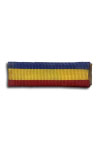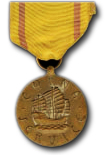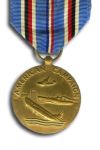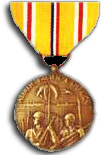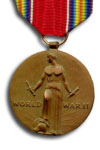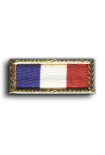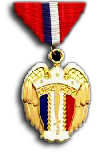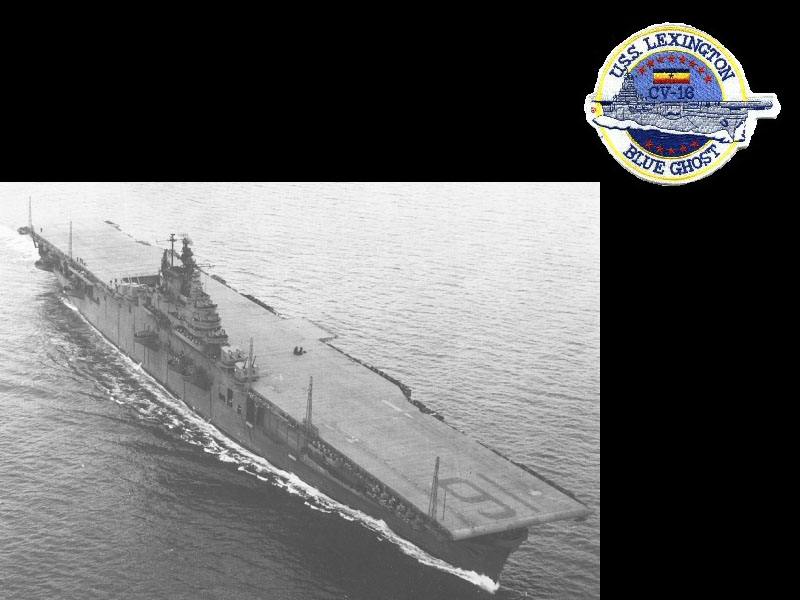Lexington, USS (CV-16)
Biography
On July 15th, 1941, the keel for the U.S.S. Lexington (CV-16) was laid down at the Bethlehem Steel Company in Quincy, Massachusetts. Initially the ship was to be named the U.S.S. Cabot but on June 16th, 1942, after the loss of the U.S.S. Lexington (CV-2) on May 8th, 1942 she was renamed U.S.S. Lexington. She was launched September 23rd, 1942 and commissioned on February 17th, 1943, Captain Felix Stump commanding.
During the war, the ship earned her nickname, the Blue Ghost as contrary to other naval vessels, she was not painted in camouflage colors but in blue gray. The Japanese claimed more than once having sunk the vessel but time after time this proved to be incorrect, hence the appearance of he word ghost in her nickname.
After the necessary trial runs, the U.S.S. Lexington was dispatched to the Pacific, arriving in Pearl Harbor August 9th, 1943. Immediateky after she participated in operations at Tarawa, Wake, and the Marshall and Gilbert Islands. She finished the year at Kwajalein. Here, on December 4th, she was damaged by a torpedo and arrived in Pearl Harbor on December 9th.
After repairs in Bremerton Shipyard in Washington, she re-entered operational service on February 20th, 1944. As part of Task Force 58 (Taffy 58) she participated in operations off Hollandia and Truk in April. In June she saw action off Saipan and Guam and she was involved in the battle for the Phillipine Sea on June 19th and 20th, 1944. Subsequently she operated off the Marianas during the famous Marianas Turkey Shoot where over 300 hostile aircraft were destroyed on the first day of the action.
In August she participated in operations near Guam, Palau and the Bonin Islands and in September off Yap, Ulithi, Mindanao, the Visayan Sea and the area around Manilla. In October she took part in operations off Okinawa and Formosa. Subsequently she took part in the Battle for Leyte Gulf were she was hit by a Kamikaze action. Although seriously damaged, the vessel could be saved and was later repaired.
December 1944 and January 1945 she again took part in operations near Luzon and Formosa, followed by operations in the Chinese Sea, off Saipan, Camranh Bay, Hong Kong, Formosa and Okinawa and in February off Japan and Iwo Jima. After a short period of rest, the U.S.S. Lexington remained in Japanese waters for operations against the Japanese mainland. Immediately following the surrender of Japan, aircraft of the Lexington were used to drop food near POW camps.
December 16th, 1945, U.S.S. Lexington berthed in San Francisco.
April 23rd, 1947, the ship was decommissioned and placed in reserve. September 1st, 1953, work started at the Puget Sound Naval Shipyard to convert her to an attack carrier (CVA-16). She was recommissioned on August 15th, 1955. In January 1962, she was to be employed as training vessel (CVS-16) but because of the Cuba crisis she was recommissioned as an attack carrier. December 1962, she was ultimately converted to a training vessel in Pensacola, Florida, receiving her designation CVT-16 on January 1969. November 8th, 1991, she was permanently decommissioned.
June 15th, 1992, the U.S.S. Lexington was donated to Corpus Christi, Texas as a museum vessel. In 2003 she was marked down as an Historic Landmark.
Commanders:
February 17th, 1943 - April 10th, 1944: Captain Felix Budwell Stump;
April 10th, 1944 - January 30th, 1945: Captain Ernest Wheeler Litch;
January 30th, 1945 - November 18th, 1945: Captain Thomas Hinckley Robbins;
November 18th, 1945 - October 11th, 1946: Captain Bradford Ellsworth Grow.
Do you have more information about this person? Inform us!
Citation:
“For extraordinary heroism in action against enemy Japanese forces in the air, ashore and afloat in the Pacific War Area from September 18, 1943, to August 15, 1945. Spearheading our concentrated carrier-warfare in the most forward areas, the U.S.S. LEXINGTON and het air groups struck crushing blows toward annihilating Japanese fighting power; they provided air cover for our amphibious force; they fiercely countered the enemy’s aerial attacks and destroyed his planes; and they inflicted terrific losses on the Japanese in Fleet and merchant marine units sunk or damaged. Daring and dependable in combat, the LEXINGTON with her gallant officers and men rendered loyal service in achieving the ultimate defeat of the Japanese Empire.”
Sources
- - Presenting Letter Presidential Unit Citation
- U-boat net
